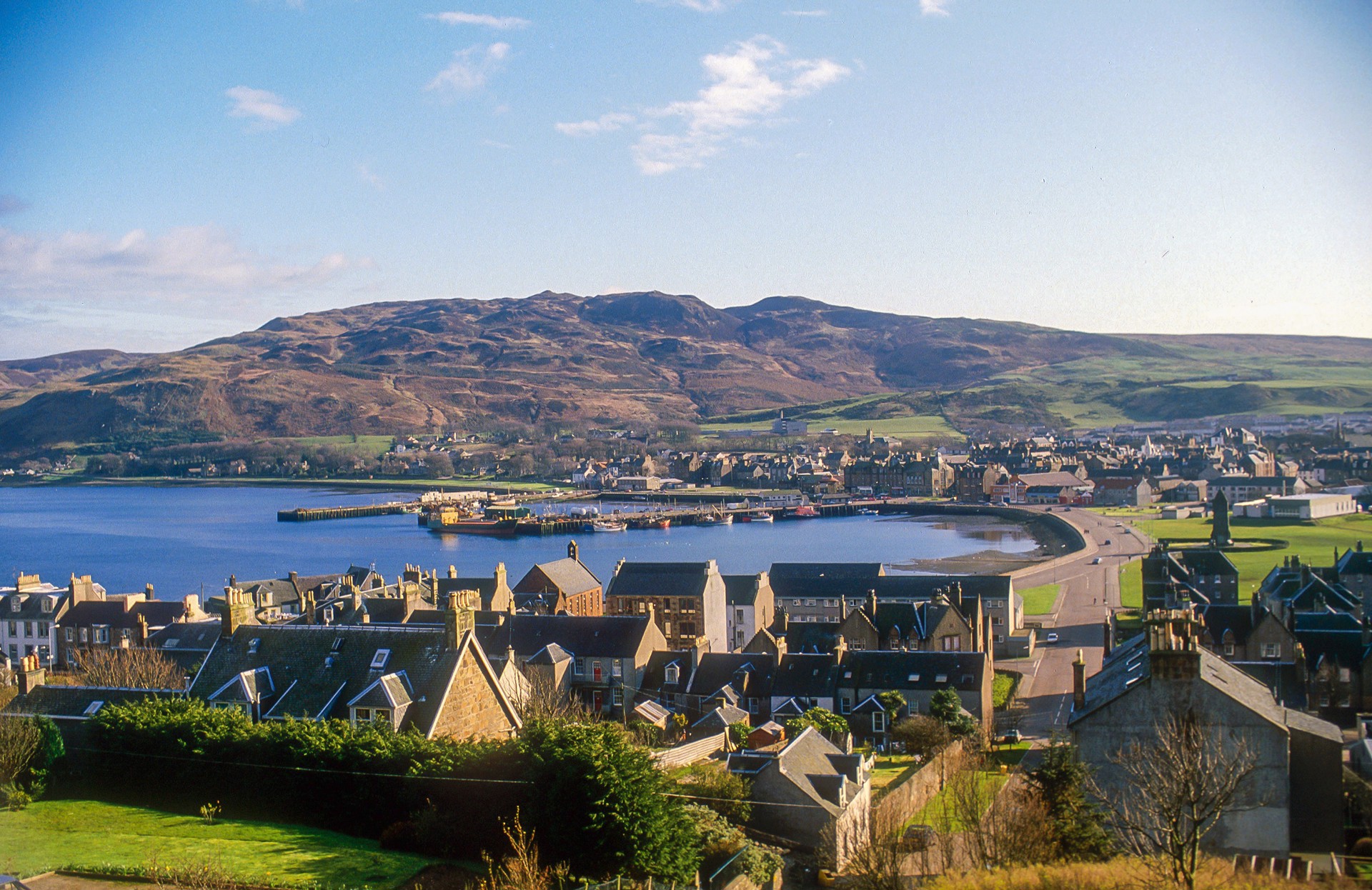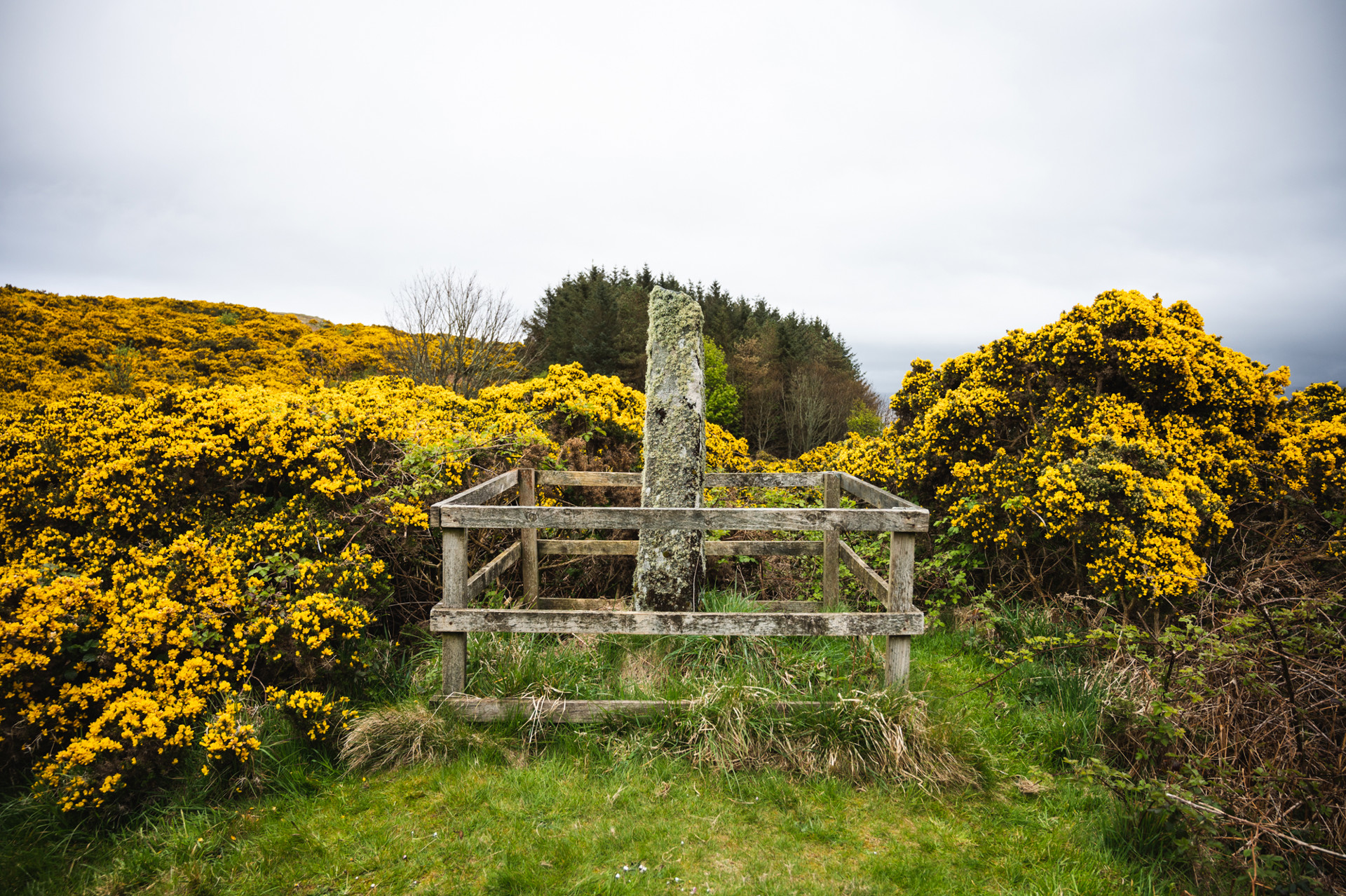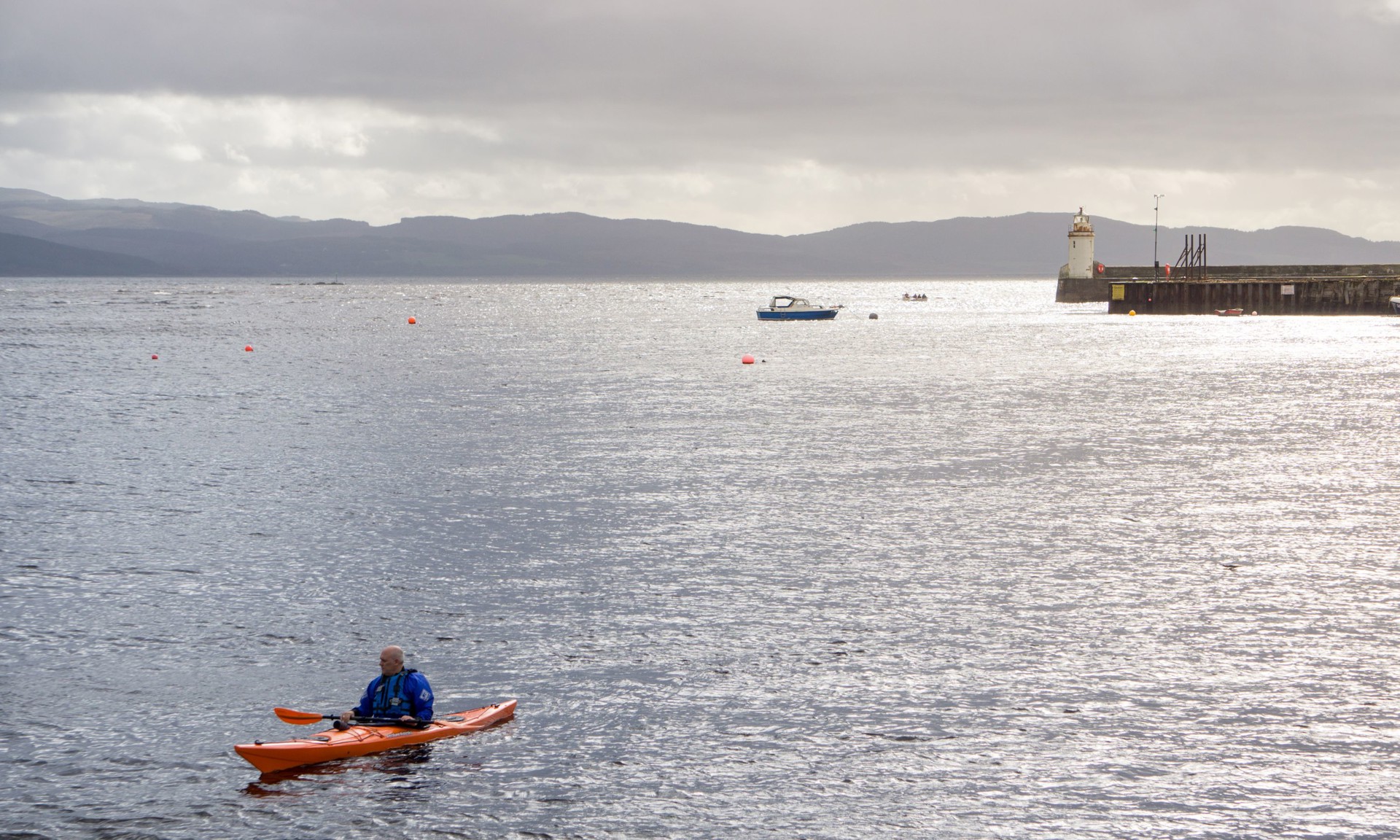Make a Pilgrimage to Campbeltown
Davaar Island and the Crucifixion Cave Painting
Davaar is a tidal Island located at the entrance to Campbeltown Loch, a landmass that can be reached on foot at low tide via a tidal sandbar known as the Dhorlin. After checking the timetables for high and low tides, please allow at least 2 hours for your visit – there is roadside parking available at Kilkerran Road.
The cave contains a life-sized painting of Christ on the Cross and can be located by traversing the island’s southern coastline – the opposite side from the Lighthouse. Traditionally recorded as the seventh cave along, it can be identified by small wooden crosses and devotional cairns left by pilgrims.
Painted by local man and schoolteacher Archibald Mackinnon in 1881, the cave and its wonderful lifelike image of Christ on the Holy Rood has become a modern shrine for Christian pilgrims. A must-see experience.
- Tidal Island located at the opening of Campbeltown Loch
- Can be visited on foot at low tide
- Allow time to get back safely approx 40 minute walk
- Island houses few caves
- One is home to a life size painting of the crucifixion
- In 1881 Artist Archibald Mackinnon had a dream with a vision to paint the crucifixion on Davaar Island in the cave
- The town originally believed the painting was from God
- When they found out it was Mackinnon he was run out of the town
- He did return on a couple of occasions to touch up the paint
- It has been restored over the years
- Around the cave there are wooden crosses and devotional cairns
Saint Ciaran’s Cave
St Ciaran’s Cave can be found on the mainland opposite the Cave Painting shoreline, on the isolated tidal headland of Auchinhoan Head. It lies approximately 1 mile from New Orleans Bay, a cave that was the retreat of Ciaran of Clonmacnoise, one of the twelve Irish Celtic Apostles. Ciaran is regarded as the Patron Saint of Kintyre and his name is identified with the original Christian community founded on the shores of Campbeltown Loch, Cean-Loch-Cilciaran – the head of the loch of the church of Ciaran.
The cave contains fragments of a Celtic Cross, a stone carved basin and the Marigold Stone – a flower-inscribed stone that signifies Celtic Christianity.
Please check with landowner if access is available and be sure and consult the times of high and low tides.
Campbeltown Cross
Campbeltown Cross is the largest and finest example of a late medieval Celtic Cross in mainland Argyll. It was carved in 1380, and most likely because of its fine workmanship was ascribed to the Iona School of carving. It once stood in the churchyard at Kilkivan near Machrihanish but was moved to Campbeltown to become a Mercat cross sometime around 1680. After many years standing in Main Street, the cross was moved to a small garden at Old Quay Head, a place it still exists to this day.
It must be admired for workmanship of the highest quality, with Celtic and Christian symbolism displayed on either side of its 3.3 metres in height.
Throughout its long history, Campbeltown Cross has seen occasions of national importance, as well as being the focal point for local celebrations. A magnificent example of monastic dedication, it stands as a proud example of faith, community and human resilience.
Site of the Old Gaelic/Highland Church and 1642 foundation stone – adjacent to the Ardshiel Hotel, Kilkerran Road.
All that survives of Campbeltown’s – then Lochhead - first Presbyterian church is the fertile greenery of its churchyard, with the 1642 foundation stone built into the surrounding western wall. The church had a capacity for 400 people and was built East to West in the style of a Geneva Cross. Local legend states that the churchyard was used for victims of the 1647 plague, certainly believable, as the Parliamentary / Covenanting Army who marched into Kintyre that year required to leave Perth hastily due to an outbreak of the pestilence.
After the defeat of Clan Donald in 1647, the Plantation of Lowland people into Kintyre began in earnest. The same people were required to use the Highland Church for worship, a difficult scenario, as all services were conducted in Gaelic. This in turn prompted the construction of a new Lowland church in or around 1655, the same a few hundred yards nearer to the town centre on Kirk Street and called the Thatched House. The original Highland Church continued to be used until 1770, this before the construction of a new church at the top of New Quay Street in 1803.
Old Kilkerran Cemetery – resting place of Aedan, first consecrated king of Dál Riada.
There are no visible remains of the ancient chapel of Kilkerran – Church of Ciaran - which until the middle of the 19th century stood at the centre of what is now the innermost portion of Kilkerran Cemetery. According to the 7th century Senchus fer N’ Alban (‘History of the men of Alba’) a leader by the name of Aedan N’ Gabhran became the first consecrated King of Dalriada in AD 574 – (crowned by Saint Columba). After a successful reign, he eventually abdicated his responsibilities and returned home to Kilkerran where he died in AD 605. He is buried in the ancient cemetery of the same name.
In time, Kilkerran Cemetery became the most diverse burial ground in the country, this made possible by the only successful 17th century plantation of Lowland people into the West Highlands of Scotland. Here, in the ancient, consecrated soil, like nowhere else in Scotland, lie Lowland and Highland people in equal numbers.
The cemetery has early Christian cross-decorated stones, fragments of Medieval crosses - one dedicated to Gilbert MacKay and his wife – and many post Reformation monuments.



